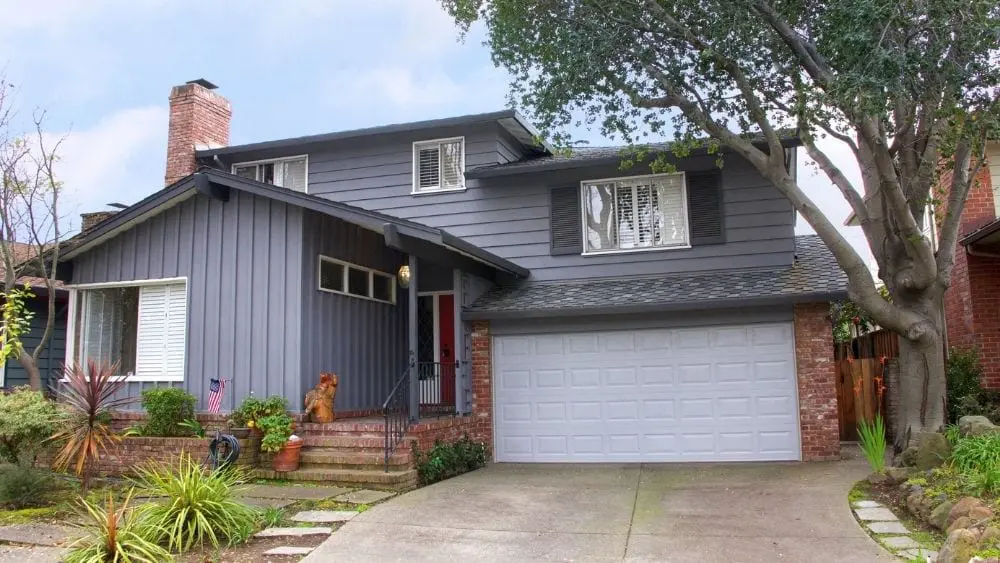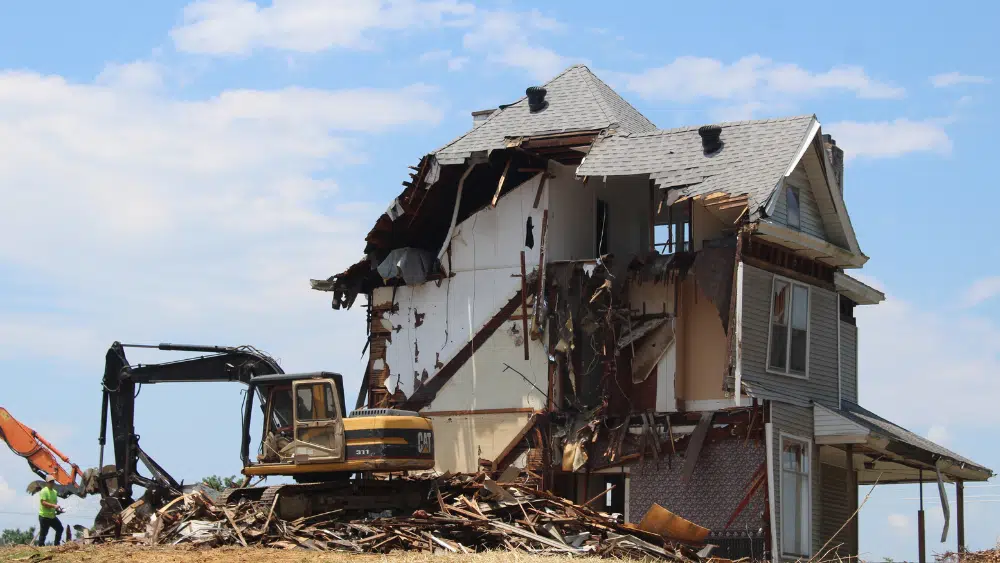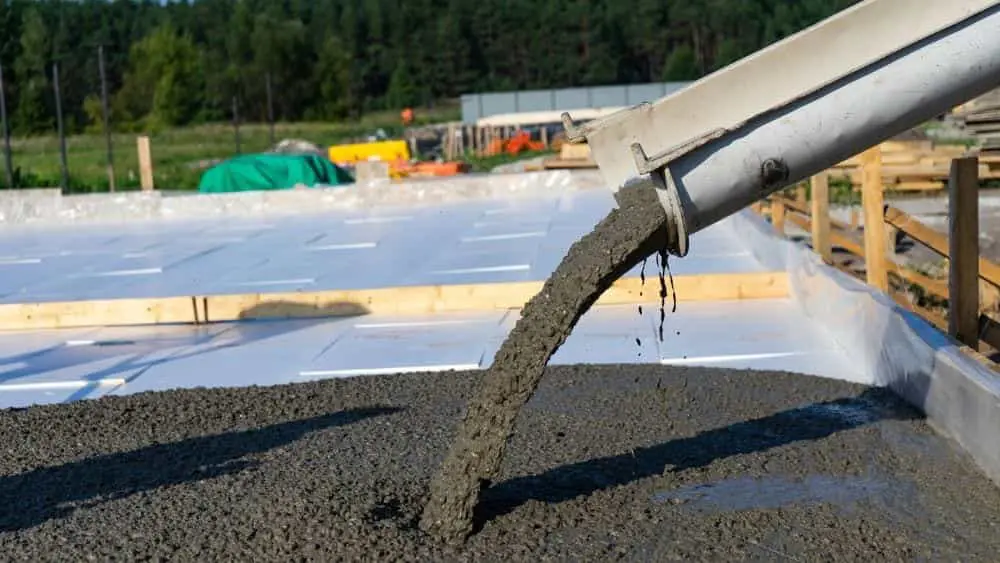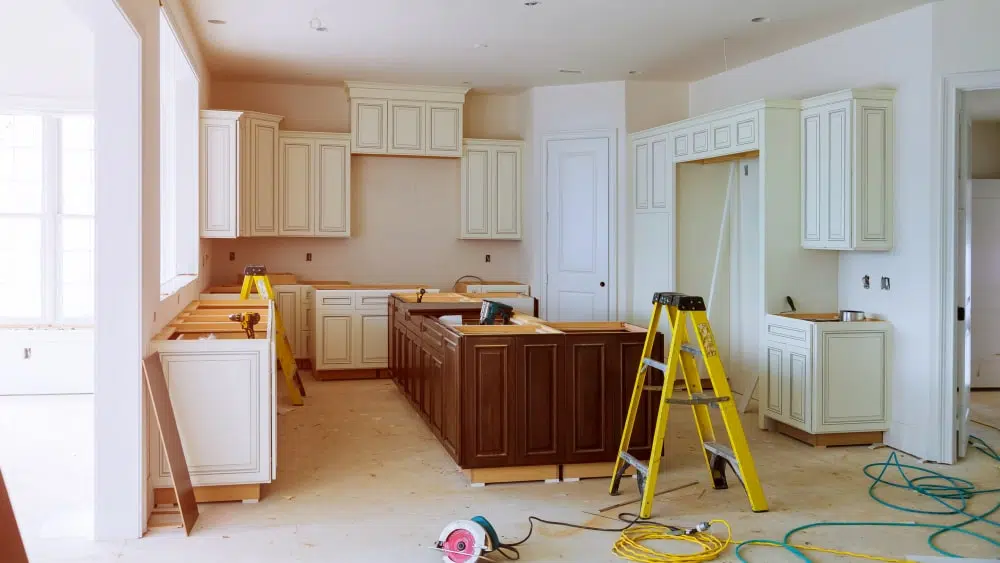
If you’re facing costly repairs or sky-high heating and cooling bills in your current home — or you’ve uncovered hazardous materials that must be removed — demolishing the home may be the right course of action. Or you may just want to tear down your existing property to start fresh with the tailor-made home of your dreams. Regardless of your reason, can you demolish your home if you’re still paying off the mortgage?
The answer to that is: Talk to your lender. That’s because the property you’d like to tear down is acting as the collateral securing your home loan.
When you applied for your mortgage, your lender had the property appraised and applied as insurance in case you defaulted on your monthly payments. Essentially, your lender can foreclose on your property, reclaiming the asset as theirs if you can’t keep up with your mortgage. If you destroyed the property, however, they no longer have the assets to recoup to compensate for their losses. Therefore, your lender may not let you proceed with a home demolition and rebuild.
If you do not consult with your mortgage lender and head straight into the demolition, you could face serious repercussions for violating your mortgage loan contract. Your lender could respond with legal action, including coming after your other assets, such as your car, a second property, or your savings. They’re entitled to seize assets that add up to the remainder of what you owe on your mortgage.
Your job is to be upfront and honest with your lender, letting them know why you’d like to demolish and rebuild your property. Best-case scenario? They’ll provide you with a handful of options to help you refinance your mortgage and pay for your home demolition and rebuild project.
But in a worst-case scenario, your lender may insist that you cannot demolish the home until you own the property outright by paying off the remainder of your mortgage in its entirety.
There is some middle ground, too: If your outstanding mortgage balance is on the lower end of the spectrum, your lender may allow you to roll the remaining balance into the new mortgage you’ll owe for your newly constructed home.
Steps to Consider for a Home Demolition (With a Mortgage)

If you’re still managing a hefty mortgage but you’d like to tear down your home to rebuild, you have a handful of important things to consider. They include:
1. Add up the costs
You’ll need to do some serious number-crunching first to see if you can afford a home demolition and rebuild. If you’re tearing down your home, you ideally have the savings to pay for the demolition and construction of a new home. If not, you’re once again at the mercy of your bank!
Bear in mind, the cost to demolish a house is roughly $18,000, ranging from as low as $3,000 up to $25,000, according to industry estimates. But this cost will fluctuate depending on the size of your home, whether you choose deconstruction or demolition, and where you are in the country to source the required labor.
After that, you’ll need the funds to rebuild your new home. In this case, the average cost of constructing a home is roughly $296,652, according to 2020 data from the National Association of Home Builders, while other estimates peg the price range from $112,000 up to $448,944.
You’ll also need to tally up your mortgage payments to figure out the outstanding amount.
Add these three numbers up and you’ll have a ballpark estimate of how much the entire project will cost you, from paying off your existing property to financing the next chapter of your family home. If you encounter sticker shock, the project may not be worth pursuing after all.
2. Assess your financial situation
In a perfect world, you may have the savings or income to pay off your existing mortgage and simultaneously cover off the looming costs of a teardown and rebuild. In other instances, some homeowners may be strategic, using the proceeds from a major home sale to pay off the mortgage on another home they’d like to demolish and rebuild.
If you fall into these categories, you’re in the clear. Once you pay off the remainder of your mortgage, you’re off the hook with your lender, so you don’t need to ask for their permission to demolish the property, and you can self-fund the teardown and rebuild.
But most homeowners will need a hand with financing. It’s in this case that you need to zero in on what you can do on your own along with what you’ll need help with.
If you’re nearing the end of your mortgage, aim to pay off as much as you can.
And if you intend on asking your lender for construction financing, get your financial house in order. Construction financing isn’t as easy to secure as a conventional mortgage because no established property is on the line as collateral.
Because of this caveat, you’ll need to have a solid credit score, a 20 percent down payment for the new build, and a low debt-to-income ratio.
Make sure you clear these checkpoints as a baseline. If you don’t have the savings, the credit score, or the ability to pay down your debt, chip away at this step before you make your case to lenders.
3. Ensure you’re allowed to demolish your property (and rebuild it the way you’d like to)

Even homeowners with a mortgage paid in full may face another roadblock: municipal red tape that may stop them from tearing down their property or rebuilding it the way they’d like to. Before you make the case to your lender, make sure you can move forward with this project with the required building permit approvals from your city, council, and homeowner’s association.
For starters, check your local government’s website for their list of rules and regulations surrounding home demolition. If you’re unsure, it’s worth consulting with a local contractor who knows the ins and outs of what’s required in your community.
Each region has its own set of rules to play by. You may find out that you can’t build a larger home on your lot like you had planned on, or you can’t tear down your home during certain months of the year. You never know what limitations may be on your doorstep!
This is another key step as you do your due diligence. You may also learn that your dream home’s blueprints don’t match up with your current lot and it isn’t worth tearing down.
4. Consult with your lender about your financing options
As a rule of thumb, most lenders won’t let you demolish a home you still have an outstanding mortgage on, but it’s worth consulting with your lender to see what your options are. As mentioned above, if the remainder isn’t a lot, your lender may be willing to roll the remainder of your loan into your new home financing.
You can increase your odds of getting financial help by showing your lender you’re a responsible borrower. Show them you have a lump sum of savings, a steady source of income to service debt, and a low debt-to-income ratio.
Come prepared with detailed construction plans, including a line-by-line cost breakdown so both parties know precisely how much you’re asking to borrow and for what reasons.
Your lender may allow you to proceed if you have the funds to cover the demolition and the rebuild. This way, you’re only on the hook for your mortgage.
On the other hand, if your mortgage is nearly paid off, your lender may offer you a construction loan. These special loans will provide you with financing to help pay for the materials, permits, and labor that are needed to construct your custom home. The funds can even be used to pay for the teardown or to purchase the land you’d like to build on.
Construction loans are like a line of credit — you and your builder will draw from the account only for approved home construction-related expenses. While your new home is being built, the only payments you need to make are towards the interest on the cash that’s drawn from the construction loan account, and not the entire loan amount.
Once your home is built, you can either convert your construction loan into a traditional mortgage or pay off the entirety of the loan.
5. Make sure you have a Plan B

Whether you encounter financial roadblocks or logistics problems between permits and construction timelines, there is a possibility that tearing down and rebuilding again isn’t your best option.
If this is the case, make sure you have a backup solution. Your options could include:
- Financing a major renovation instead. If paying off your mortgage in its entirety just isn’t possible, you could opt to give your home a major facelift through renovations. Keep in mind, you can gut the floors and take apart the walls of your home, leaving a healthy structure and foundation in place for a new configuration or style. This could be more than enough to breathe new life into your home. You can pay for it out of pocket, or through options like a home equity line of credit or a cash-out refinancing.
- Moving the existing home to another location. If you’re dead set on keeping the lot and rebuilding, you could sell the home to a family that wants to transplant it elsewhere. In this case, uprooting a house, and transporting it to another location, can come with a steep price tag. But if you — or the buyers — can afford it, this is an option worth thinking about if it means you’ll have a blank slate to rebuild on. The income from the home sale can also be applied to your new construction. Before proceeding, you must make sure the house can be physically moved to its new location intact.
- Find a new place to call home. If there are too many limitations around demolishing your property, you may have to return to the drawing board. Think carefully about what drew you to the idea of tearing down your existing property. Do you want to live in the same neighborhood, or is it the appeal of designing your own layout? Once you clearly identify what you’re looking for, you can apply these “wants” to your house hunting.

Carmen Chai is an award-winning Canadian journalist who has lived and reported from major cities such as Vancouver, Toronto, London and Paris. For NewHomeSource, Carmen covers a variety of topics, including insurance, mortgages, and more.
 Best Tiny Home Builders in Minnesota
Best Tiny Home Builders in Minnesota